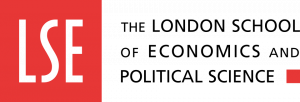
This course is an introduction to the theoretical and practical functioning of urban real estate markets using concepts from urban economics, finance and real estate economics.
In the first half of the course, we will cover the productive and consumption advantages of urban areas and location patterns within cities. We will see how these help determine demand for residential and commercial real estate, as well as looking at differences in supply for different types of properties. We will also discuss the impact of policy, with a special focus on taxation and urban planning.
Equipped with this framework, the second half of the course will explore how demand and supply for space determine real estate asset prices and how to measure them. We will then discuss how those measures can be used to value commercial real estate, as well as other techniques for valuation, focusing on cash-flow analysis. From there, we will explore how those valuations, financial leverage, and portfolio considerations are used to make real estate investment decisions. Finally, we will investigate the drivers of real estate cycles and emerging market trends to study their implications for investment outcomes.
A major component of the course is the case study in which students value a mixed-use commercial real estate property using the knowledge and techniques they have learned.
This course will be particularly relevant for students interested in employment in real estate related fields in the public or private sector; or for students who are considering further education in this field.
Students will be expected to bring a laptop to class in order to prepare their case study assessment for submission.
